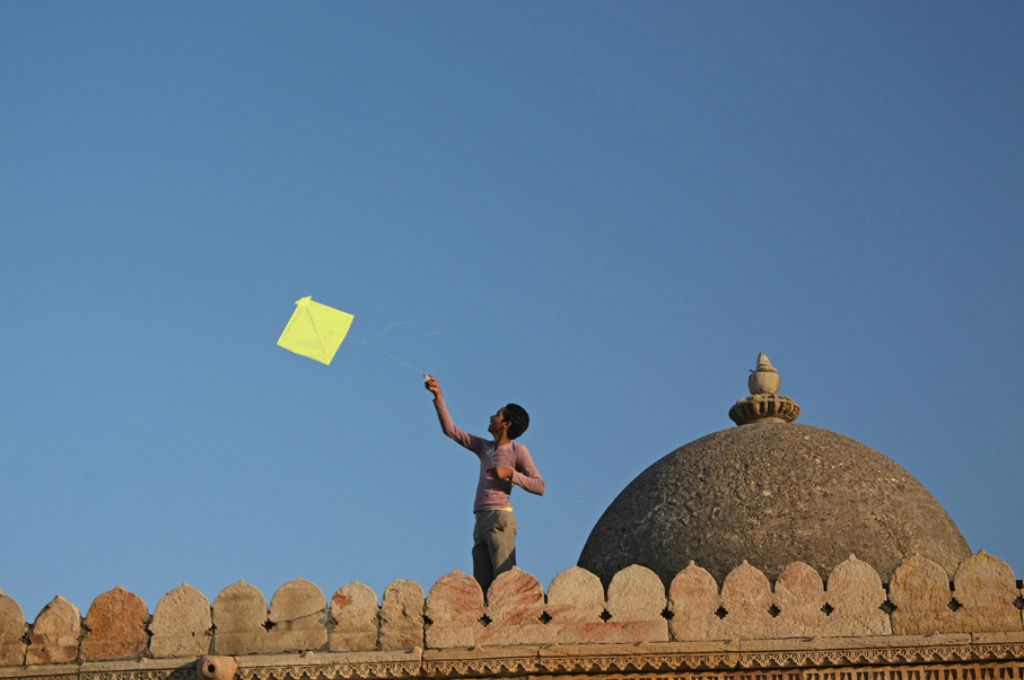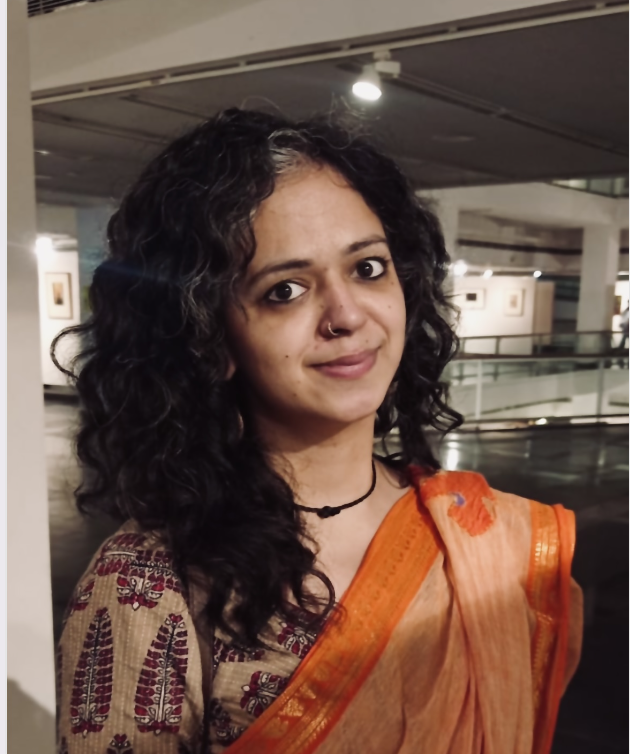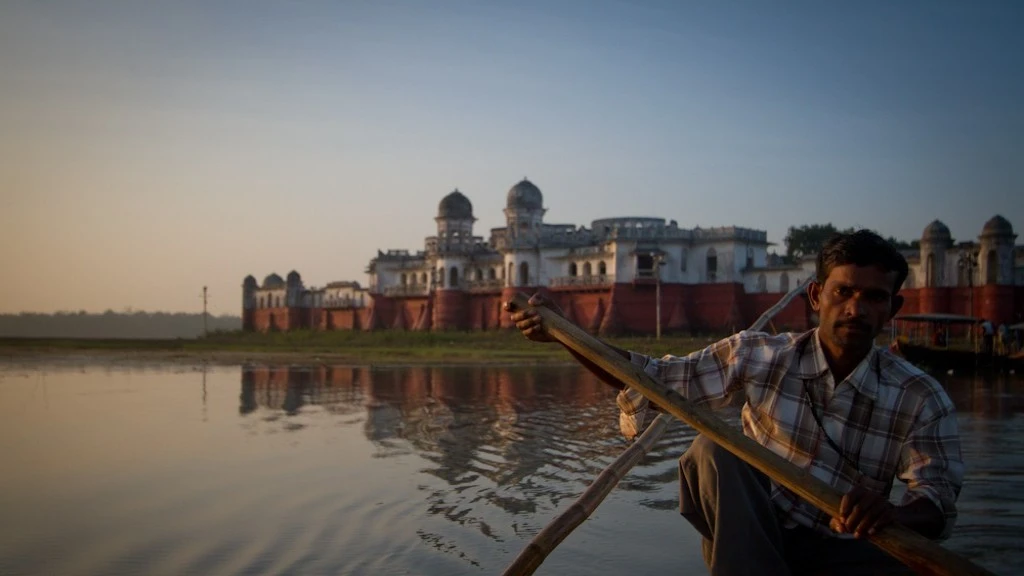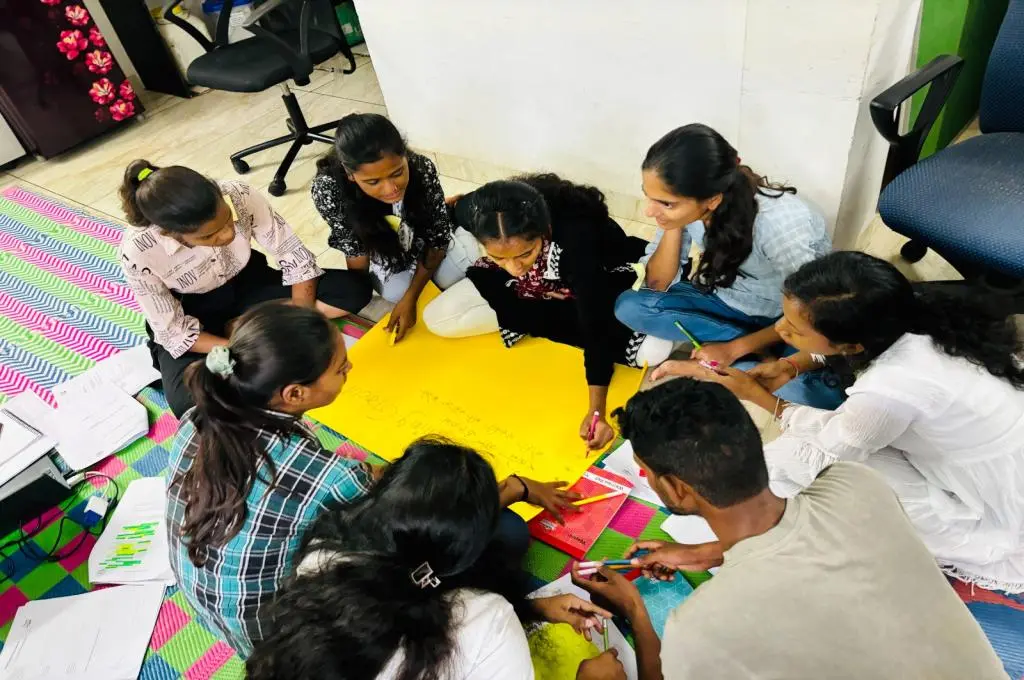Young people are often heralded as the vanguards of the future. But do they actively contemplate their future? Moreover, are we equipping them with the skills necessary to shape futures that transcend the status quo and embrace possibilities that may be radically different from the present? Addressing these questions becomes all the more urgent when we scrutinise whether these envisioned futures are equitable and just.
How does one become conscious of the future? Is thinking about the future a skill? Can one’s imagination of the future be harmful to others? And what dispositions, knowledge, and skills are needed to imagine equitable futures? According to UNESCO, it is crucial for young people to be able to imagine multiple alternate futures and be open to new possibilities of action in the present to bring such futures to reality. This ability is called futures literacy.
Unpacking anxieties about the future
At Quest Alliance, we conducted futures literacy workshops with more than 500 students in the age group of 14–29 years. These students—all of whom belong to marginalised groups that have experienced varying forms of structural injustice—came from 36 districts in the states of Odisha, Gujarat, and Assam. For instance, young Loiry* from Moregaon in Assam belongs to a tea tribe, one of the most marginalised communities with the highest dropout rate in secondary schools. Historically brought in by the British from Bihar, Chhattisgarh, Jharkhand, and adjacent areas as indentured labour, tea tribe communities have continued to work for low wages in exploitative conditions. Similarly, development projects in Khadsaliya village in Gujarat have usurped the landholdings of Saurabh* and his friends. For others, agriculture is no longer a viable livelihood due to dust from the coal plants settling on their fields.
While the initial aim of our research was to understand young people’s aspirations, it became clear during our first field visit in Assam that thinking about the future was a source of immense anxiety for young people. This was because they believed that their voices are not acknowledged in deciding their own futures. Disruptions such as climate change and AI exacerbate this anxiety. In Majuli, a river island in Assam, Shalini* told us that she wouldn’t know what to do if floods engulfed her house. Such a situation is not unthinkable as soil erosion is a constant threat in Majuli, particularly affecting members of the Mising community who reside closer to the river. Students also spoke of anxieties around automation and the possibility of not having jobs because of the increase in the use of AI.
We employed speculative futuring as a methodology to address the current challenges confronting young people. Speculative futuring involves contemplating what-if scenarios, facilitating the exploration of diverse possibilities not limited by present knowledge. This approach enabled us to explore possible, preferred, and non-preferred futures with young people while encouraging them to imagine various alternative possibilities.
When students were first asked to contemplate the future, their responses spanned a wide spectrum—from a reluctance to consider the future, to uneasiness about what it might entail, to viewing it as a continuation of the present. Some expressed uncertainty, with remarks such as “We don’t know if we will be alive in the next 20 years.” Others expressed disinterest, stating things such as “We just want a secure job that pays well, whatever it may be.” In Gujarat’s Saurashtra region, many young girls’ perspective was shaped by societal expectations, as manifested in statements such as, “At most, our names will change,”—alluding to the likelihood of marriage.
We used a justice-based pedagogy where students were made conscious of injustices they or their peers face, and were encouraged to imagine transformative possibilities or pathways of hope and action. For example, girls in Khadsaliya initially expressed enjoyment in doing household chores because, as women, they felt obligated to learn such duties; however, during the workshop, they lamented that increased household chores left them with little time for schoolwork.
Some of these insights were further explored at the end of the workshop, where students imagined alternate futures. During a speculative futuring exercise in Assam, for instance, students suggested living in outer space as a possible solution to the climate crisis. However, they quickly identified that because of class barriers, only the rich would be able to access it.

Why teach about reflecting on the future?
While thinking about the future has long been a centralised affair under the ambit of governments, states, and other decision-making bodies, recent advances have called for democratising the field. UNESCO deems futures literacy as being as important for young people as reading and writing, and has accordingly established more than 110 futures literacy laboratories worldwide.
As we reflect on the future, it’s important to note that many of our visions are often influenced by the past or, as seen in students’ stories, may simply be an extension of the present. These futures are often shaped by narratives driven by the state, media, or influenced by biased perceptions based on factors such as gender, caste, or class. For instance, some students recognised systemic challenges in Guwahati and labelled the city as unliveable, but still aspired for their districts to evolve into a Guwahati. Some imagined a smart future but recognised that people would be isolated due to excessive reliance on technology. In other cases, while students acknowledged multifaceted issues such as the uneven distribution of profits or industrial pollution, their proposed solutions were often simplistic, for example, advocating for waste reduction or recycling without considering more radical alternatives. Futures literacy workshops we conducted with students allowed them to identify existing assumptions, thus laying the groundwork for questioning the dominant vision of the future and making space for imagining new possibilities. Here’s how we incorporated diverse perspectives into visions of the future.
1. Contemplate the future
In Majuli, floods and soil erosion are persistent challenges, leading to widespread displacement and loss of livelihoods. However, the impacts of these natural disasters are particularly acute for communities residing close to the river, primarily the Mising tribal communities, among other ethnic groups. Some families have experienced displacement multiple times, with many forced to settle on government land or damaged embankments. During the workshop, the first step was to contemplate the future and be conscious of it. Initial responses reflected a sense of extreme powerlessness, with statements such as “Everything is dependent on God,” or “Nothing is possible. Everything is in the hands of politicians.”
2. Acknowledge existing injustice
The next step of the process is to provide space for students to acknowledge and process some of the social injustices that they experience. In Majuli, students’ concerns included perceived corruption in government exams, discrimination faced by those belonging to the tea tribes, the effects of soil erosion, and the paucity of jobs.
Prompted by the facilitator to reflect on the impact of floods, students from privileged castes residing away from the banks of the island could acknowledge that their experience of living in Majuli was considerably different from the lived realities of the marginalised Mising community. This exercise promoted a deeper understanding among young people of how factors such as caste, class, gender, or tribe can lead to varying impacts even within one location.
3. Speculate on the future
After addressing current challenges, students were prompted to imagine the future, exploring both dystopian and utopian scenarios. This was done creating scenarios through the exaggeration of challenges mentioned by students, fictionalising scientific predictions, or proposing utopian solutions. Particularly notable were speculations about the ongoing reduction in Majuli’s land size due to environmental changes. For example, confronted with the possible disappearance or destruction of Majuli, some said, “This land is a holy place, it cannot disappear. The floods will stop.” However, after leaning into their discomfort, students were able to move beyond denial and consider alternative possibilities. Utopian responses to this problem included an all-woman government.
4. Imagine alternate futures
Students were able to move from a place of discomfort to actively engaging in solutions. Each of these solutions was then examined from the perspectives of class, gender, and other social categories to determine if the envisioned futures were inclusive.
For example, when students suggested that dams could prevent flooding, the facilitator offered instances where dams had failed, such as in Assam’s Kaziranga, or shared other students’ experiences that challenged this dominant narrative. This enabled young people to consider versions of the future that would be advantageous for all. This process involved questioning and debating not only when dams function effectively but also considering the costs such as displacement borne by communities living closest to the dams, highlighting the need for greater scientific rigour and improved rehabilitation measures.
In other places such as in Bhojava, Gujarat, a student envisioned water banks with a committee representing all castes, particularly Dalits, to ensure fair water distribution. In Gujarat’s Khadsaliya, students suggested shifting work hours to cope with increased heat but also anticipated a decline in women’s work participation.
5. Build agency
Additionally, these workshops shifted the students’ mindset from feeling powerless to having a sense of agency. They said, “This process is making us realise that we need to do something and help find solutions.” Some also noted, “Whatever problems are to come in the future, we can think about addressing them.” The students moved from helplessness and individualised solutions to hoping for change by imagining systemic solutions that are community-centred. A student in Majuli mentioned, “We should build a process through which we can take these solutions to the government”.
Futures literacy allows students to consider the future, empowers the imagination, and rescues it from dominant narratives. It also allows one to see uncertainty as an opportunity and enables action in the present to make the identified desirable futures a reality. This vital capability, necessary for young individuals, also proves beneficial for all stakeholders engaged in the sector.
When considering the intersection of futures and our present actions, it becomes clear that many struggle to shape our current reality effectively. At the same time, our efforts to address challenges may inadvertently create new issues if we fail to examine our biases. Developing the ability to question assumptions and expand our collective imagination emerges as a crucial and universally valuable skill. Beyond its importance for the younger generation, this capacity serves as a guiding light for all stakeholders in the development landscape. By embracing futures literacy, we become better equipped to navigate complexity, and chart paths towards multiple alternative futures through thoughtful, sustainable actions.
*Names changed to maintain confidentiality.
—
Know more
- Read From Anxiety to Hope, a report on building climate futures literacy in young people.
- Read this article to find out about how to build resilience to help people cope with future adversities.
- Read this report on the aspirations of youth in India and their visions for the future.
Do more
- Contact the authors at info@questalliance.net to collaborate on a futures literacy workshop.






